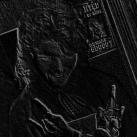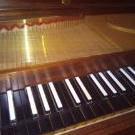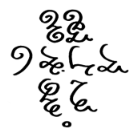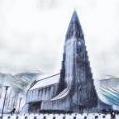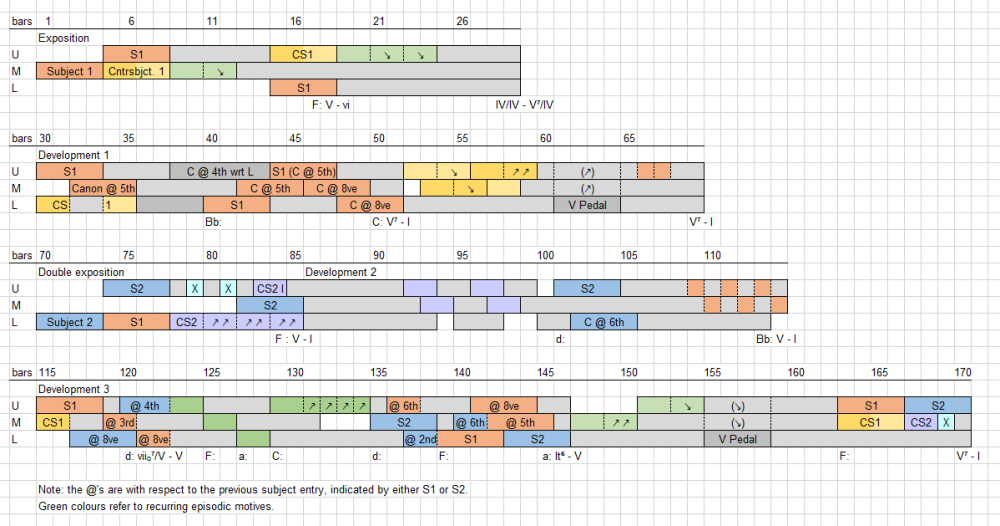Leaderboard
Popular Content
Showing content with the highest reputation on 06/13/2022 in all areas
-
Pieces for String trio n.2_DM.mp3 Hi, in the last months I have been writing a series of short pieces for string trio (2 violin, cello and continuo). Most of them are written in rounded binary form. I find this is an amazing combination for baroque, galant and early classic style and also for practicing counterpoint and imitation. I hope you enjoy. As always, I appreciate your comments. Pieces for String trio n.2_DM.pdf2 points
-
The Chancel Choir of the Congregational Church of Needham were kind enough to allow me to record this piece this morning in an SAB with piano version. Everyone sounded great! Here's a link if anyone would like to take a listen:2 points
-
I wrote this for a recital i did a couple weeks ago. probably the prelude/ interlude sections sound more improvised than i was intending but much of it was written kind of hastily. The influences were John Bull, Orlando Gibbons, Thomas Tomkins, maybe Frescobaldi and Leonora Duarte as well. There's a page turn halfway in, just a head's up.1 point
-
1 point
-
Very colorful harmonically. I also enjoyed the syncopated rhythms. As Quinn said above, it is difficult to comment on the instrumentation owing to the quality of Musescore's rendering, though it is fairly well orchestrated, in my opinion. You use the palette of dynamics here to great effect, and the final chord is extremely textured! I'm a fan. I had intended to provide remarks regarding the notation, but I don't think it would be very fruitful since Musescore has such limitations. A fine work, Peter! Thank you for sharing.1 point
-
Hi @Fugax Indoles. Nice fugue! I really like the subject and the countersubject. Both are very stylistic and have excellent features. The general musical grammar seems to be overall very good too (e.g. resolution of dissonances, treatment of melodic sevenths etc.). The following comments are made with the assumption that you aim to compose pastiche music in the Baroque style. Let's dissect the rest of the fugue. Firstly, there seems to be a lack of subject entrances. Besides the exposition, I count a total of two further entries. One at the end in the tonic key, and another incomplete entrance in the rather strange key of D minor (which you turn to extremely often - why is that?). I feel like the piece could have done with a few more of those, particularly ones in major keys. Indeed you also seem to avoid major keys altogether here. Is this an artistic choice? Now, the episodes. I don't quite understand some of the writing here. For example, mm. 11-15: it's not a sequence, doesn't feature imitative counterpoint, and it does not play on any of the rich motives present in the subject and countersubject. So what purpose does it serve? Another example is the dominant pedal in the middle of the piece. It's very nicely written and very dramatic, but what is it preparing us for? The resolution in mm. 31 seems to lead us onto more free counterpoint whose purpose I cannot quite understand. One possibility to remedy this is by tying all the bass B's in mm. 26-29, such that the pedal fizzles out over time. The less attention the pedal draws, the less ingenious the resolution need be. Another point I'd make is that I feel the texture is too dense, even for a (mostly) three-part fugue. It's not necessarily that the voices don't get breaks, it's more that we are hearing three-part chords all the time, at more or less quaver or crotchet speeds, where the underlying rhythm are dominated by semiquavers. The best way of fixing this is to make extensive use of hockets throughout (see BWV 888b - arguably the best example out there) and by using notes of long lengths. It should help you to relax the harmonic rhythm too in certain places. Large chords being played constantly is especially problematic for the keyboard, since its sound production places emphasis on any newly played notes, as opposed to, say, strings, where the volume can be kept constant when notes are changed. This brings me to the final point - keep the instrumentation in mind when you compose! This fugue is not possible to be played on a keyboard. The rule is fairly simple: each hand can reach an octave and maybe also a second very very occasionally. Even if you have no intention for this fugue to be live performed, writing idiomatically for the instrument is still good for the soul. It forces you to consider how to recreate certain desired sonorities with a more limited set of tools at hand. Edit: forgot to mention that a tonic answer is required here, not a real one.1 point
-
As others have said, interesting - and I was listening more to the overall effect than for theoretical points. It carries on very well. Difficult to comment on the instrumentation. The harmonic density didn't seem to be particularly dense and this is where musescore may have let it down. Having heard a few musescore scores here I've grown used to the upper strings being weak. That seems to be the case here. I could see the density building up in the score (notably bar 31) and sim, and at the end. Certainly had a nice modern feel to it.1 point
-
Hi all. First time posting here! I'm currently in the process of composing a complete keyboard suite à la Bach. Wanted to share a sample, in this case the Gigue, for feedback. The choice of the subject is up for debate but I've been known to use random nursery tunes in the past. In particular, are the sequences, and the final 12-bar stretto, convincing?1 point
-
Hello! I wanted to share my piece for solo piano, Clair de Lune, played by gamma1734 on youtube. There are a couple things in the first draft of the score I sent to the performer that weren't clear, so it's not played exactly as I intended. I'd be happy to hear your opinions of it 🙂 François1 point
-
Well since you think the acciacatura works you could go for that, but in my opinion, a legato apoggiatura emphasizing the rit. would work nice too. It's purely a matter of tastes, the portato apoggiatura may work as well, there would be a little difference between legato & portato + pedal so both may be even unnoticeable for a lot of listeners. I have followed the one in the video and I read the pdf too. It may have some questionable choices but I wouldn't say it's bad written or anything like that. It's accurately written in my opinion, there are just some things like M45 that feel confusing but that's all. I sometimes struggle with these kind of details too, like, imagine you have an E major progression but your score is in F minor. Well then you either write E with all the sharps etc, etc, or you write Fb with flats and double flats, or do a mix in order to get the least possible accidentals which might be good or confusing depending on the performer... You could even change the key if the passage is long enough. So yeah, don't worry too much about those tiny details I found because in general terms the piece is properly written. Oh that's quite interesting indeed! I thought he chose them from some free websites but it seems it's not always the case. Glad he played yours and I had the opportunity to listen to it. I agree his channel is fantastic and the pieces he discovers are often very cool! Kind regards!!1 point
-
I left my like a while ago but forgot to comment so let's listen to it again. First movement: It sounds serious, powerful and inspiring to me (What are the "//" markings BTW?). E minor is powerful and serious in my mind, it lacks the pomposity other tonalities (C-, Bb) have (obviously that's just subject to many factors including my subjectivity) and replaces it by some other kind of shine. I overall like it, I mean it would be difficult not to, pieces with harpsichord are just fine, but apart from that the kind of chromatic motive that is played repeatedly by the string section is not only well developed but easy to remind and enjoy. If I had to note anything not positive, I'd say something as banal as this: I would not put slurs and ties in the same side of the score (e.g: M7, Vl. I, both above). Second movement: Good building & returning on the first 18 measures. Sorry for being overly nit-picky but M26, Vl. II, you have a D# there while in the prior, similar passage you had an Eb. Is there a reason behind that? Not that it's bad or anything, it's just that I stumbled upon it and had to ask. Also if you're using musescore (or another program with a similar "issue"), beware of the silences when you erase notes, they get all over the bar unnecessarily filling it, e.g: M30, Ob; M27, Vc. Cb. Hps. The dynamics are so nice, I can definitely say my favourite parts in this movement are those >p and <f at e.g: M18, M36. They bring a lot of vitality to the movement. The ending doesn't convince me a lot but it's nice. Third movement: oh yes, "Prestissimo", the word I like to read in a piece when I'm not the one playing it. Okay it sounds very much like this will be the concluding section, which I know it is beforehand but in case I wouldn't, it would sound me like "here comes the final movement". The viola triplets are probably and somehow guilty of that. The scales part seem to combine the shine of the first movement and the charm of the second, and the part after that just before returning to the A section is delicious, and probably the part that surprised me the most in the entire piece. The Pizzicato passage is very nice as well. The ending measures did not disappoint. If I had to choose a movement as my preferred one, it would be the third by far. Not that there's something wrong in the other two, but in my opinion you really level up in the final movement. Suggestion: perhaps it would be wise to offer the audio & score by movements too. This is a suggestion another user here wrote to me and I believe it makes sense in multi movement-ed pieces like your symphony. I do hope to listen to the next. Thank you for sharing and hope you don't find my feedback too dense. Kind regards!1 point
-
What an interesting "jolly jaunt"! I loved the orchestration and various rhythms. I did not find the repeated motif overused at all. Please bring me to the merriment! Mark1 point

